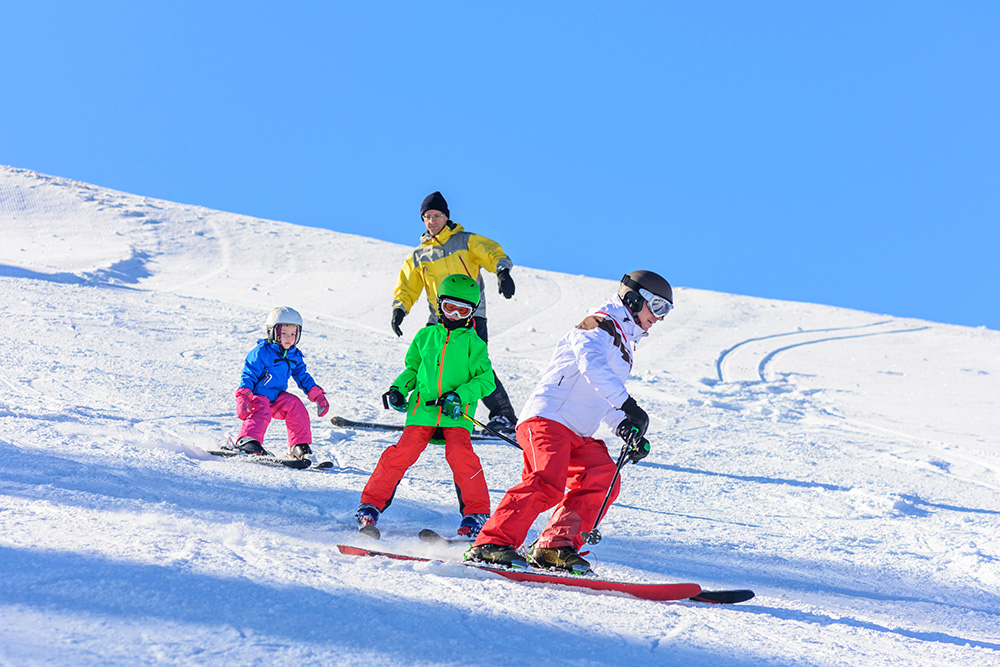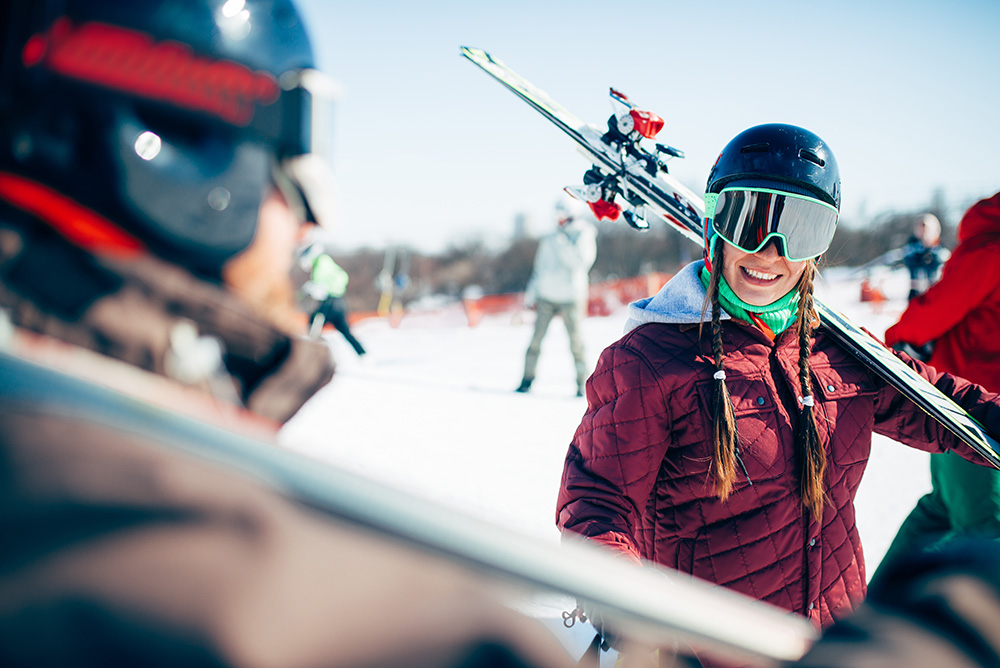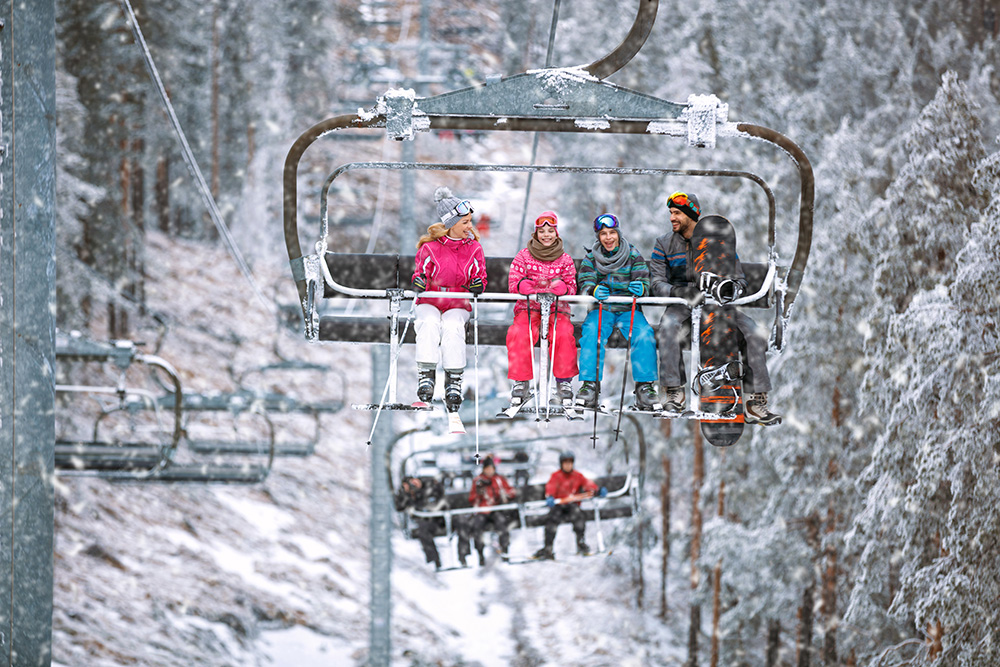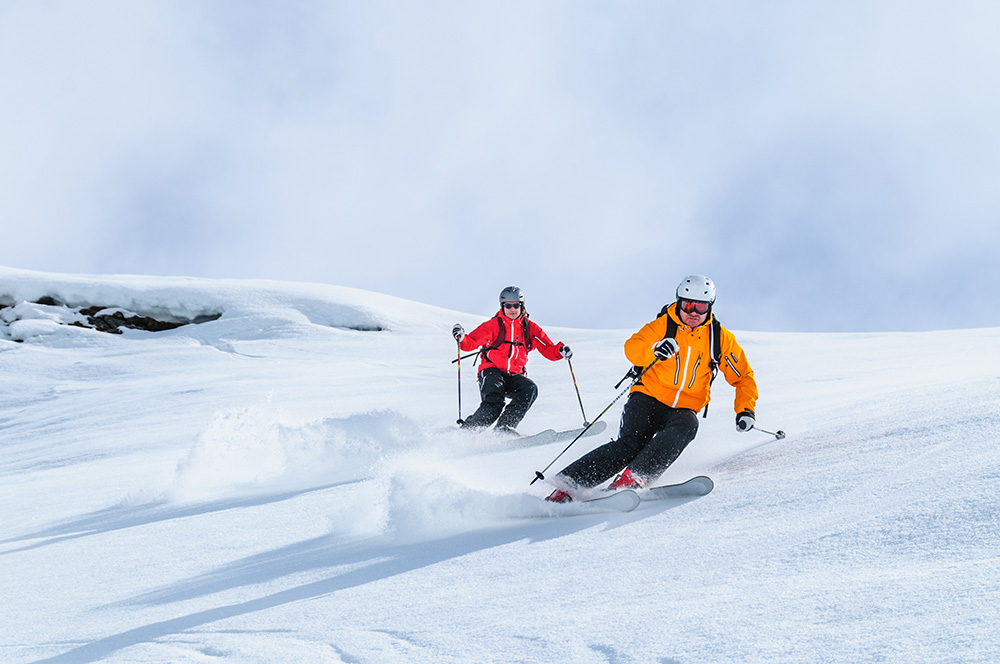Skiing For the First Time
Skiing for the first time can be both exhilarating and intimidating. The thought of gliding down snow-covered mountains while taking in the breathtaking views is enough to spark excitement, but the fear of falling or feeling out of place can make anyone hesitate. Whether you’re heading to a popular resort or a smaller local hill, the key to enjoying your first ski trip is to be prepared. In this blog, we’ll guide you through everything you need to know to make your first time skiing as smooth and enjoyable as possible, from what to expect to what to wear and the best lesson options.
What to Expect
The first time skiing is a thrilling experience, but it’s important to understand what you’ll face as a beginner. The physical demands of skiing can be more challenging than expected. Skiing involves balancing, coordinating your movements, and controlling your speed—all while managing the cold, high-altitude environment. As a beginner, you might find yourself falling a few times, but this is completely normal! It’s all part of the learning process, and soon enough, you’ll be gliding with more confidence.

Expect a learning curve—skiing isn’t something you master in one day. It will take a bit of practice to get comfortable with the movements and to build muscle memory, especially for controlling your speed and stopping. But don’t worry, everyone starts somewhere, and it’s all about progress, not perfection. You’ll find that with each run, your skills improve, and the nervousness fades.
Gentle Slopes and Giant Views
The mountain environment itself can be awe-inspiring. From the crisp mountain air to the panoramic views of snow-covered peaks, there’s nothing like the feeling of being on a ski slope for the first time. You may feel a little overwhelmed at first, but the ski resort staff and fellow skiers are usually very friendly and understanding. Ski resorts are designed to accommodate beginners, so you’ll find plenty of gentle slopes to practice on and supportive instructors who will guide you along the way. Remember, everyone was once a first-time skier, and most people are happy to share a word of encouragement.
The ski culture is often welcoming and social, so don’t be afraid to ask questions or take your time. Whether you’re taking lessons or just exploring on your own, you’ll find that skiing is not just about mastering the slopes, but also about enjoying the journey.
What to Wear
When preparing for your first time skiing, dressing properly is crucial to stay warm, dry, and comfortable throughout the day. The right clothing not only enhances your experience but also helps you focus on learning the sport instead of being distracted by discomfort. Here’s what to wear to ensure you’re ready for the slopes:
Base Layers
Start with moisture-wicking base layers. Avoid cotton, as it traps sweat and can make you cold. Instead, opt for materials like merino wool or synthetic fabrics that keep moisture away from your skin and regulate your body temperature.
Insulation Layer
On top of your base layers, add an insulating layer such as fleece or a light down jacket. This layer will help retain your body heat, keeping you warm as you spend time on the mountain.

Outer Layer
A waterproof and windproof ski jacket and pants are essential. The weather in ski resorts can change quickly, so having a jacket that can keep snow and wind out is important for both warmth and safety. Look for ski-specific clothing that is designed to handle the elements.
Accessories
Don’t forget accessories that will keep you comfortable in the cold:
- Gloves or Mittens: Insulated gloves or mittens will keep your hands warm, especially on colder days.
- Helmet: Safety is key when skiing for the first time, so always wear a helmet. It will not only protect your head but also help you feel more confident.
- Goggles: Ski goggles are essential for protecting your eyes from the sun’s glare and snow, as well as improving visibility in variable weather.
- Neck Gaiter or Balaclava: On windy days, a neck gaiter or balaclava can shield your face from biting cold and snow.
- Footwear: Wear ski-specific socks—avoid cotton socks, as they trap moisture. Wool or synthetic ski socks will keep your feet warm and dry while providing the right amount of padding in your boots.
With the right gear, you can focus on enjoying your first time skiing without worrying about being too cold or uncomfortable.
Lesson Options
For first-time skiers, taking a lesson can make all the difference. Skiing involves a unique set of skills, and having a professional instructor guide you through the basics will help you gain confidence, build proper technique, and stay safe on the slopes. There are a few different lesson options to consider based on your learning style and budget:
Private Lessons
Private lessons offer personalized, one-on-one instruction from an experienced ski instructor. This option allows you to move at your own pace and receive undivided attention, making it a great choice if you want to focus on specific areas or need extra support. Private lessons are perfect for those who are a bit nervous or prefer a more tailored experience.

Group Lessons
If you’re comfortable learning alongside others, group lessons are a fantastic option for first-time skiers. These lessons tend to be more affordable than private ones, and you’ll be grouped with others who are also beginners, which can help you feel more at ease. Group lessons typically cover the basics, like skiing in a wedge, turning, and stopping. Plus, they’re a fun way to meet fellow skiers.
Kid-Specific Lessons
If you’re introducing children to skiing, many resorts offer specialized lessons designed to engage and teach kids in a fun, supportive environment. These lessons use games and activities to help children feel comfortable and confident on the slopes.
When booking your lessons, be sure to reserve in advance—especially during peak seasons when instructors are in high demand. Many resorts also offer discounts or package deals for first-time skiers, so it’s worth researching to find the best deal for you.
To Rent, or Not to Rent
One of the big decisions when you’re skiing for the first time is whether to rent or buy your equipment. For beginners, renting ski gear is usually the best option, as it allows you to try out the sport without a big upfront investment.
Benefits of Renting
Here’s a breakdown of the pros and cons of renting versus buying ski equipment:
- Cost-Effective: Renting is far cheaper than purchasing new ski gear, especially for first-time skiers who aren’t sure if they will continue the sport regularly.
- No Need for Transportation: Ski gear can be bulky and heavy. Renting allows you to avoid the hassle of traveling with skis, boots, and poles.
- Try Before You Buy: Renting gives you the chance to test out different equipment to see what feels most comfortable and works best for your skiing style before making a larger investment.
- Equipment Maintenance: Rentals are typically well-maintained by ski resorts, and the staff will ensure everything is in good condition before you hit the slopes.
When to Consider Buying
If you plan on skiing regularly, it may be worth investing in your own gear for a better long-term experience.
- Frequent Skiing: Having your own skis and boots can provide a more customized fit, increasing comfort and performance.
- Custom Fit: Ski shops can provide expert fittings to ensure that your skis, boots, and poles are tailored to your body size, skiing style, and skill level.
What to Rent
For first-time skiers, it’s best to rent the following gear:
- Skis: Rentals come in various sizes and styles, perfect for beginners to test out different types of skis.
- Boots: Rental boots are available in all sizes, and the staff will help you find the best fit for comfort and performance.
- Poles: Ski poles are simple to rent and come in adjustable lengths for added convenience.
- Helmet: Always wear a helmet, especially as a beginner. Most ski resorts offer rentals for helmets to ensure safety on the slopes.
Renting is typically the most cost-effective and convenient choice for first-time skiers, but if skiing becomes a passion, investing in your own gear could be worth considering down the line.

Extra Things to Bring
While skiing for the first time, it’s easy to forget some small but important items that can make your day more enjoyable. Besides your ski gear, here are a few extra things to bring that will keep you comfortable and prepared on the slopes:
Snacks
Skiing can be physically demanding, so it’s a good idea to pack some easy-to-carry snacks like granola bars, trail mix, or fruit. These quick energy boosters can help keep your energy levels up between runs.
Water Bottle
Staying hydrated is key, especially when skiing at higher altitudes. Carry a refillable water bottle to ensure you have water available throughout the day. Dehydration can lead to fatigue, so take regular sips to keep your energy high.
Sunscreen and Lip Balm
Even on cloudy days, UV rays can reflect off the snow and damage your skin. Apply sunscreen to exposed skin areas, such as your face and neck, and use lip balm with SPF to protect your lips from getting chapped or sunburned.
Hand and Toe Warmers
Cold hands and feet can quickly make skiing uncomfortable. Hand and toe warmers are small, disposable packets that can fit in your gloves or boots, providing extra warmth on especially chilly days.
Small Backpack
A small, lightweight backpack can be incredibly useful for carrying your extra gear, snacks, water, and any personal items you may need. Look for a comfortable, water-resistant pack that won’t get in the way while skiing.
These items might seem small, but they can significantly enhance your first time skiing by ensuring you stay comfortable, energized, and ready to tackle the slopes.
Save with Skier Deals
Planning your first time skiing doesn’t have to break the bank. You can save big by checking out Skier Deals for exclusive offers on ski rentals, lodging, dining, activities, transportation, and more at the best ski resorts in North America. Whether you’re booking your first ski lesson, renting gear, or looking for discounts on your resort stay, Skier Deals has you covered.
Make the most of your ski trip without worrying about the cost—visit Skier Deals today to unlock amazing savings for your next adventure on the slopes!
Related Blog Posts
Are you a newbie to skiing or snowboarding? These blogs might be helpful: